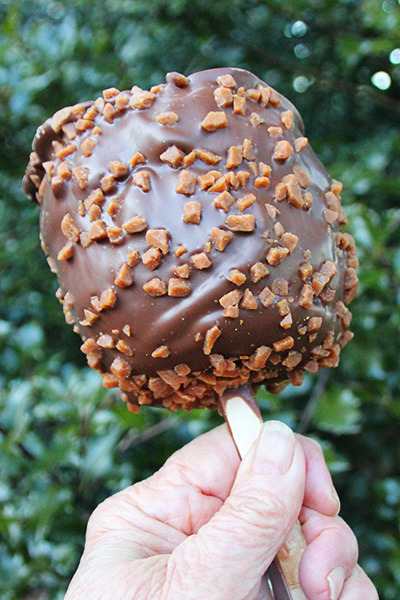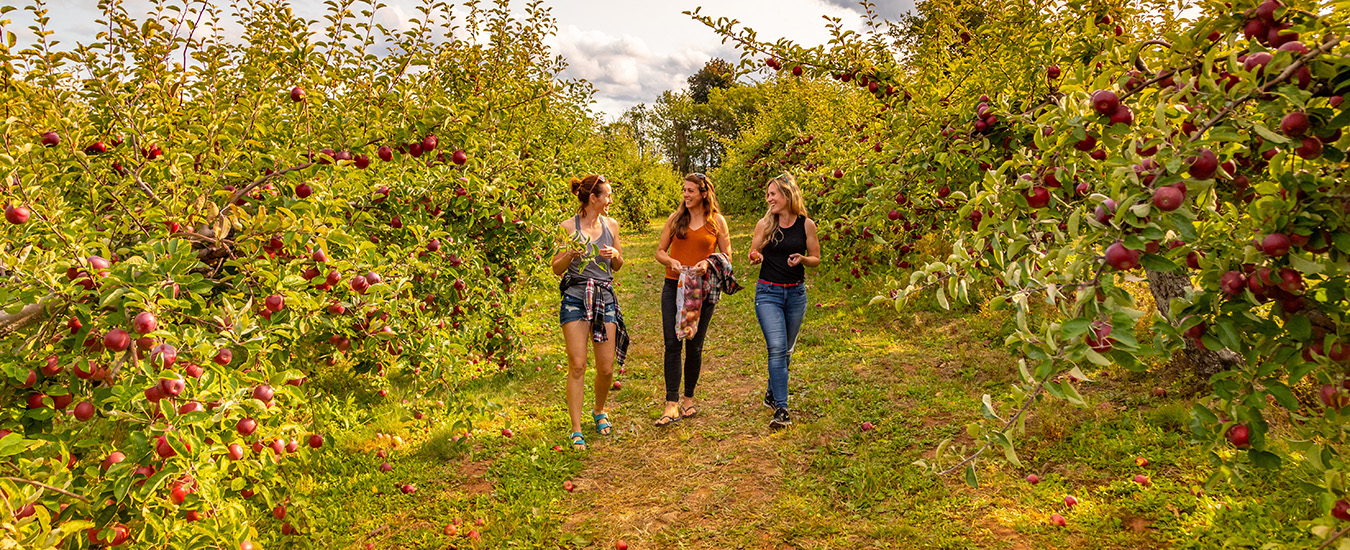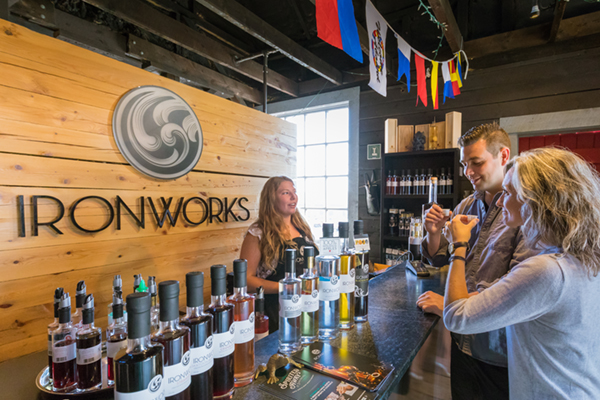Caramel apples, cider and more
By Sandra Phinney
The first time I understood the word “apple” was 70 years ago when my mother took my sister and me to the Annapolis Valley Apple Blossom Festival. I’ll never forget seeing miles of orchards and a bazillion blossoms. I also learned that this event would translate into getting a new batch of apples, delivered in barrels, and stored in wooden cubicles in the cellar of our 100-year-old house.
Of course, I expected the apples to show up within a few days. Mama explained, “It’s going to be a while, Sandra. Bees need to pollinate the blossoms. The apples will grow, pickers will pick them, and put them into big barrels. We’ll get our apples in the fall.” Although I didn’t connect all the dots, I remember the excitement when barrels of Golden Russets, Cortlands, and Gravensteins finally arrived, and the heady apple-smell of it all.
What comes to mind when you hear the word “apple?” I’d bet a bushel of ’em that it’s apple pie, apple crisp, or apple sauce. Here are a few more things for you to consider.
7 more ways to “think apple”
1. Visit a cider-maker. In 2003, Denise and Derek Flynn bought a rundown 5-acre orchard with 1,000 apple trees in Corberrie. After years of work, it’s a sight to behold. More recently, Denise took courses in making cider and created the Corberrie Cider Co. It’s a going concern and they love to have visitors.
2. If you cannot visit a cider-maker, make your own. Mind you it won’t have the “kick” of a commercially produced brand, but it’s fun to make, and is delicious hot. In a large pot, put 10 quartered apples and 1 quartered orange (skins and all), 4 cinnamon sticks, 6 cloves, 1 tsp each nutmeg and allspice, and ½ cup brown sugar. Cover with water a couple of inches above the fruit. Simmer for 2 hours. Mash the fruit a bit. Simmer another hour; cool, strain; refrigerate. Heat before serving.
3. U-Pick! There are more than a dozen farms in Nova Scotia where you can call ahead and book a time to pick your own apples. Apple picking starts in August and goes to the end of October. As farms are kid-friendly, this is always a fabulous family excursion.

4. Weez Coburn owns Carino Confections and makes caramel-chocolate apples as well as chocolates to sell at the Yarmouth Farmer’s Market. For her apple delights, Weez uses Honeycrisps. She double-dips them in caramel, then coats them in chocolate before adding a sprinkling of Skor toffee bits. Scoot around Google for ideas and create your own.
5. Blair House Museum is celebrating its 40th anniversary. Located on the Kentville Agricultural Centre grounds, the museum gives you both the history and backstory of the apple industry, as well as an overview of the research—past and present. Then veer south to the Apple Capital Museum in Berwick. It’s housed in a restored 19th century store, originally a harness shop. You’ll also enjoy Prescott House Museum in Port Williams, former home of Charles Prescott, aka the father of the apple industry in NS. In the early 1800s, Prescott introduced Gravensteins to the province—the quintessential multi-purpose apple.
6. Make apple prints. You’ll need: apples, knife, tempera paint, heavy paper, or Bristol board to make cards or bookmarks. Carve apples into shapes such as diamonds, hearts, stars, animals, or abstract designs. Make sure the “stamp” has a level bottom. Pour paint into trays (Styrofoam bottoms saved from packets of meat or fish work well). Dip design into paint, shake off excess, then stamp away. Christmas tree decorations are also easy to make by slicing apples thinly “in the round.” Dry on a cookie sheet in 250˚F oven for 3–4 hours. Cool. Add a bit of glue and some sparkly stuff if you wish.
7. Apple soup anyone? Keep your guests guessing about the ingredients of this soup. Sauté 1 sliced onion then add chunks of 3 peeled potatoes, 6 peeled/cored apples, a tbsp of nutmeg, salt and pepper. Cover with 10-12 C of chicken or vegetable broth; simmer for 45 minutes. When cooled, blend in food processor. Heat to serve and add a dollop of sour cream per bowl. For fun, substitute a small turnip for potatoes.



